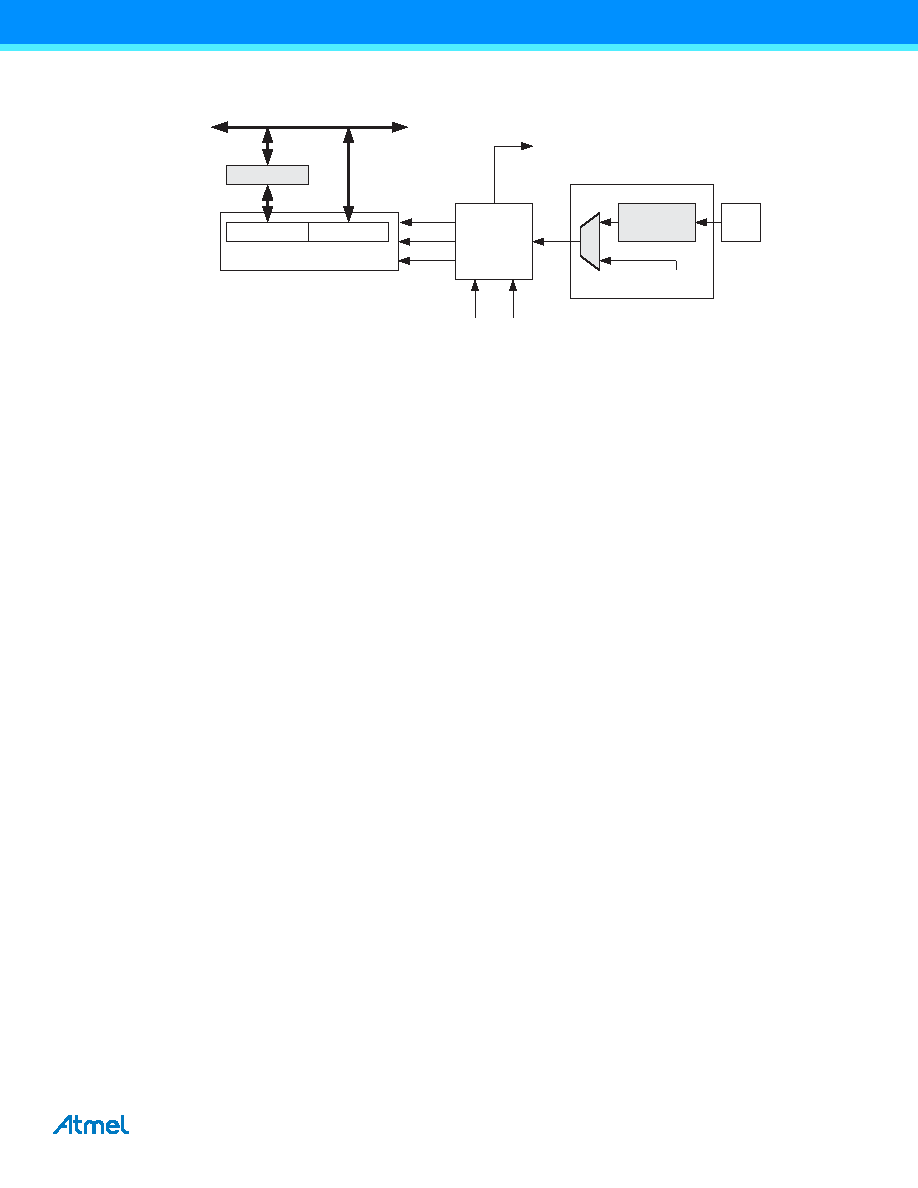- 您現(xiàn)在的位置:買賣IC網(wǎng) > PDF目錄25633 > MQ80C52EXXX-20/883D (TEMIC SEMICONDUCTORS) 8-BIT, MROM, 20 MHz, MICROCONTROLLER, CQFP44 PDF資料下載
參數(shù)資料
| 型號: | MQ80C52EXXX-20/883D |
| 廠商: | TEMIC SEMICONDUCTORS |
| 元件分類: | 微控制器/微處理器 |
| 英文描述: | 8-BIT, MROM, 20 MHz, MICROCONTROLLER, CQFP44 |
| 文件頁數(shù): | 199/219頁 |
| 文件大?。?/td> | 7896K |
| 代理商: | MQ80C52EXXX-20/883D |
第1頁第2頁第3頁第4頁第5頁第6頁第7頁第8頁第9頁第10頁第11頁第12頁第13頁第14頁第15頁第16頁第17頁第18頁第19頁第20頁第21頁第22頁第23頁第24頁第25頁第26頁第27頁第28頁第29頁第30頁第31頁第32頁第33頁第34頁第35頁第36頁第37頁第38頁第39頁第40頁第41頁第42頁第43頁第44頁第45頁第46頁第47頁第48頁第49頁第50頁第51頁第52頁第53頁第54頁第55頁第56頁第57頁第58頁第59頁第60頁第61頁第62頁第63頁第64頁第65頁第66頁第67頁第68頁第69頁第70頁第71頁第72頁第73頁第74頁第75頁第76頁第77頁第78頁第79頁第80頁第81頁第82頁第83頁第84頁第85頁第86頁第87頁第88頁第89頁第90頁第91頁第92頁第93頁第94頁第95頁第96頁第97頁第98頁第99頁第100頁第101頁第102頁第103頁第104頁第105頁第106頁第107頁第108頁第109頁第110頁第111頁第112頁第113頁第114頁第115頁第116頁第117頁第118頁第119頁第120頁第121頁第122頁第123頁第124頁第125頁第126頁第127頁第128頁第129頁第130頁第131頁第132頁第133頁第134頁第135頁第136頁第137頁第138頁第139頁第140頁第141頁第142頁第143頁第144頁第145頁第146頁第147頁第148頁第149頁第150頁第151頁第152頁第153頁第154頁第155頁第156頁第157頁第158頁第159頁第160頁第161頁第162頁第163頁第164頁第165頁第166頁第167頁第168頁第169頁第170頁第171頁第172頁第173頁第174頁第175頁第176頁第177頁第178頁第179頁第180頁第181頁第182頁第183頁第184頁第185頁第186頁第187頁第188頁第189頁第190頁第191頁第192頁第193頁第194頁第195頁第196頁第197頁第198頁當(dāng)前第199頁第200頁第201頁第202頁第203頁第204頁第205頁第206頁第207頁第208頁第209頁第210頁第211頁第212頁第213頁第214頁第215頁第216頁第217頁第218頁第219頁

79
ATmega8A [DATASHEET]
8159E–AVR–02/2013
Figure 17-2. Counter Unit Block Diagram
Signal description (internal signals):
count
Increment or decrement TCNT1 by 1.
direction
Select between increment and decrement.
clear
Clear TCNT1 (set all bits to zero).
clk
T1
Timer/Counter clock.
TOP
Signalize that TCNT1 has reached maximum value.
BOTTOM
Signalize that TCNT1 has reached minimum value (zero).
The 16-bit counter is mapped into two 8-bit I/O memory locations: counter high (TCNT1H) containing the upper
eight bits of the counter, and Counter Low (TCNT1L) containing the lower eight bits. The TCNT1H Register can
only be indirectly accessed by the CPU. When the CPU does an access to the TCNT1H I/O location, the CPU
accesses the High byte temporary register (TEMP). The temporary register is updated with the TCNT1H value
when the TCNT1L is read, and TCNT1H is updated with the temporary register value when TCNT1L is written. This
allows the CPU to read or write the entire 16-bit counter value within one clock cycle via the 8-bit data bus. It is
important to notice that there are special cases of writing to the TCNT1 Register when the counter is counting that
will give unpredictable results. The special cases are described in the sections where they are of importance.
Depending on the mode of operation used, the counter is cleared, incremented, or decremented at each timer
clock (clk
T1). The clkT1 can be generated from an external or internal clock source, selected by the clock select bits
(CS12:0). When no clock source is selected (CS12:0 = 0) the timer is stopped. However, the TCNT1 value can be
accessed by the CPU, independent of whether clk
T1 is present or not. A CPU write overrides (has priority over) all
counter clear or count operations.
The counting sequence is determined by the setting of the Waveform Generation mode bits (WGM13:0) located in
the Timer/Counter Control Registers A and B (TCCR1A and TCCR1B). There are close connections between how
the counter behaves (counts) and how waveforms are generated on the Output Compare Outputs OC1x. For more
details about advanced counting sequences and waveform generation, see “Modes of Operation” on page 84.
The Timer/Counter Overflow (TOV1) fLag is set according to the mode of operation selected by the WGM13:0 bits.
TOV1 can be used for generating a CPU interrupt.
17.6
Input Capture Unit
The Timer/Counter incorporates an Input Capture unit that can capture external events and give them a time-
stamp indicating time of occurrence. The external signal indicating an event, or multiple events, can be applied via
the ICP1 pin or alternatively, via the Analog Comparator unit. The time-stamps can then be used to calculate fre-
TEMP (8-bit)
DATA BUS (8-bit)
TCNTn (16-bit Counter)
TCNTnH (8-bit) TCNTnL (8-bit)
Control Logic
count
clear
direction
TOVn
(Int. Req.)
Clock Select
TOP
BOTTOM
Tn
Edge
Detector
( From Prescaler )
clk
Tn
相關(guān)PDF資料 |
PDF描述 |
|---|---|
| MR80C32E-16SHXXX:R | 8-BIT, 16 MHz, MICROCONTROLLER, CQCC44 |
| MQ80C52XXX-12SBR | 8-BIT, MROM, 12 MHz, MICROCONTROLLER, CQFP44 |
| MR80C32E-16P883D | 8-BIT, 16 MHz, MICROCONTROLLER, CQCC44 |
| MQ80C52XXX-16/883 | 8-BIT, MROM, 16 MHz, MICROCONTROLLER, CQFP44 |
| MV80C31-12D | 8-BIT, 12 MHz, MICROCONTROLLER, PQFP44 |
相關(guān)代理商/技術(shù)參數(shù) |
參數(shù)描述 |
|---|---|
| MQ82370-20 | 制造商:Rochester Electronics LLC 功能描述:- Bulk |
| MQ8238020 | 制造商:Intel 功能描述:CONTROLLER: OTHER |
| MQ82380-20 | 制造商:Rochester Electronics LLC 功能描述:- Bulk |
| MQ82380-20/R | 制造商:Rochester Electronics LLC 功能描述: |
| MQ82592 | 制造商:Rochester Electronics LLC 功能描述:- Bulk |
發(fā)布緊急采購,3分鐘左右您將得到回復(fù)。